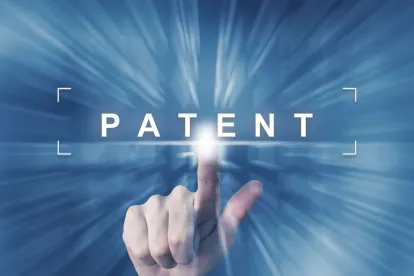Obtaining a United States patent conveys the benefit of a monopoly against others exploiting the patented invention for a limited time: 20 years from the earliest filing date. However, the process for obtaining the patent is time consuming, which can delay issuance of the patent and thereby reduce the amount of time that the patent is enforceable. The process is also expensive in terms of filing fees and attorney fees. Examiner interviews during prosecution provide the opportunity to advance the patent application to allowance in less time and to reduce the overall cost of obtaining a patent. At the same time, examiner interviews can improve the quality of the patent and facilitate obtaining the broadest protection available to the applicant.
The majority of communications between the applicant and the examiner assigned to the application are in written form, from the patent application, to the communications from the examiner, to the applicant's responses to those communications. Written communications have their limitations: different parties can read the same text and arrive at different understandings or interpretations of what they read, and sometimes an author's words do not accurately or clearly convey the author's thoughts to the other party. In some cases, it can take multiple rounds of exchanging written communications before the parties clearly understand each other's positions and gain focus of the real issues. Each round of communications adds pendency time and increases fees for the applicant. Many times, oral communications can be more effective than written communications to exchange ideas, particularly when conveying complex technical concepts and legal arguments, and to reduce the time and costs necessary to bring the case to resolution.
During an interview, the applicant's representative can speak to the patent examiner directly about the patent application and the claims. The representative can explain the invention to the examiner, help them understand the problem being solved, and articulate the distinguishing features of the claimed invention over the known prior art. At the same time, the representative can elicit the examiner's understanding of the invention and their interpretation of the scope of the pending claims and the prior art applied against the claims, concepts that may not have been fully discernible from the discussion in the Office action.
By speaking with the examiner directly, the representative can listen to the examiner's reaction to the explanations and arguments, and respond in real-time to provide additional information, resolve any areas of examiner misunderstanding, and present alternative arguments and/or proposed claim amendments based on the examiner's response. Many times, the representative can discern whether the examiner believes the claims should be allowable as written or with some clarifying amendments, sees patentable subject matter in the disclosure that can be added to the claims, or does not see a path leading to allowance of the case. After the interview, the applicant usually has a more complete understanding of the examiner's positions and can determine the best strategy for advancing the case, whether by presenting amendments and/or arguments to gain allowance, filing a response placing the application in better form for appeal, or abandoning the application.
The Patent Office recognizes the value of examiner interviews to issue quality patents and encourages interviews during patent prosecution. Interviews may be conducted at most times during the pendency of an application. An examiner may grant an interview before a first Office action, but only if they determine that it would advance prosecution or if the application is a continuing or substitute application. Otherwise, pre-first Office action interviews are typically not beneficial. Most interviews are conducted after the issuance of a non-final Office action and before a final Office action. At this point, the examiner is familiar with the application and the most relevant prior art, and the applicant's representative can evaluate the prior art applied against the claims and any other issues raised by the examiner. The examiner has discretion in granting an interview after a final Office action, but the examining procedures specify that one interview after final is permitted. An after final interview may be requested prior to filing a response to the final Office action, or by filing a response that has a narrowing amendment to at least one independent claim along with a request for an interview under the After Final Consideration Pilot (AFCP) 2.0 Program. The amendment can be minor as long as it narrows the scope of an independent claim. The AFCP 2.0 Program does not require an additional fee, and grants the examiner up to three hours of additional time to consider the response and conduct an interview. Examiners typically show increased willingness to consider the after final response with an AFCP 2.0 Request, and try to use the interview to reach a resolution and disposition of the case.
Examiner interviews can be conducted in-person, telephonically or via video conferencing. In-person interviews may be the most effective interviews, but they are the least common due to the time and expense required to travel to the Patent Office or to the examiner's remote work location. The applicant's representative can sit face-to-face with the examiner and observe the examiners' body language and reaction to their arguments. Despite the cost, the effort may be justified if the invention has high value to the applicant, or if the representative can schedule multiple in-person interviews in a single trip. Telephonic interviews are the most common and can advance prosecution at a lower cost than in-person interviews. Travel time and expenses are eliminated, and examiners are typically as prepared for telephonic interviews as they are for in-person interviews. The representative can still listen for the examiner's demeanor and acceptance or rejection of the arguments, and can adjust on the fly during the call to alternative arguments and proposed claim amendments, and can gain a full understanding of the examiner's positions on the issues. Telephonic interviews reduce the opportunity to produce visual aids in real time, but exhibits such as annotated drawings may be forwarded to the examiner in advance of the interview. Video conferencing is a more recent offering as an alternative to in-person examiner interviews that offers a collaborative environment where the parties can see each other and concurrently view and annotate documents that may be helpful in understanding the invention, the prior art and their respective arguments. At present, video conferencing interviews are less prevalent than telephonic interviews, but should increase as practitioners become more comfortable with the technology, especially after its use has been prevalent during the Covid-19 pandemic.
After the interview, both parties are required to submit a written summary of the interview for the record. The applicant's summary can be submitted as a separate paper, or included in an Office action response filed after the interview if a further response is necessary. The summary must accurately summarize the interview, including any agreements reached by the parties on claim amendments, withdrawal of rejections or potentially allowable subject matter. A well-crafted summary will memorialize the interview in a way that is favorable to the applicant's positions without making statements that could be used later to unduly limit the scope of any allowed claims. The remainder of the Office action response reflects the outcome of the interview. Brief comments are sufficient in areas where agreement was reached because the examiner is familiar with and has agreed with the applicant's positions, which can reduce the time and expense of the response and the risk of making statements against interest. It may only be necessary to provide greater detail in areas where agreement was not reached by the parties to fully set forth the applicant's arguments in preparation for an appeal. After the interview summary and response are filed in most cases, prosecution and the cycle of written communications will be closed when the examiner issues a Notice of Allowance from which a patent will issue, or a final Office action or Advisory Action from which the applicant can appeal or abandon the application.
Conclusion
Conducting examiner interviews should be a key consideration during the prosecution of any application at the U.S. Patent Office to obtain the broadest protection to which the applicant is entitled for their invention. When done well, examiner interviews identify the broadest concepts of the invention that the examiner will allow so that the claims can be drafted or amended with a commensurate scope. In most cases, the examiner interview will shorten or cut off the cycle of written communications between the parties to compress the prosecution, and reduce pendency of the application and overall expense of obtaining a patent.




 />i
/>i

